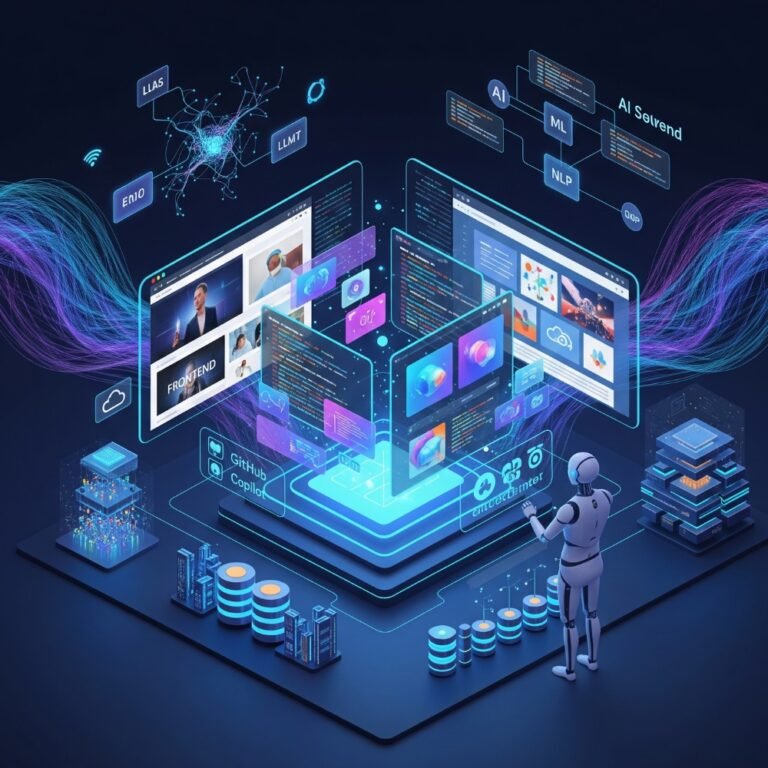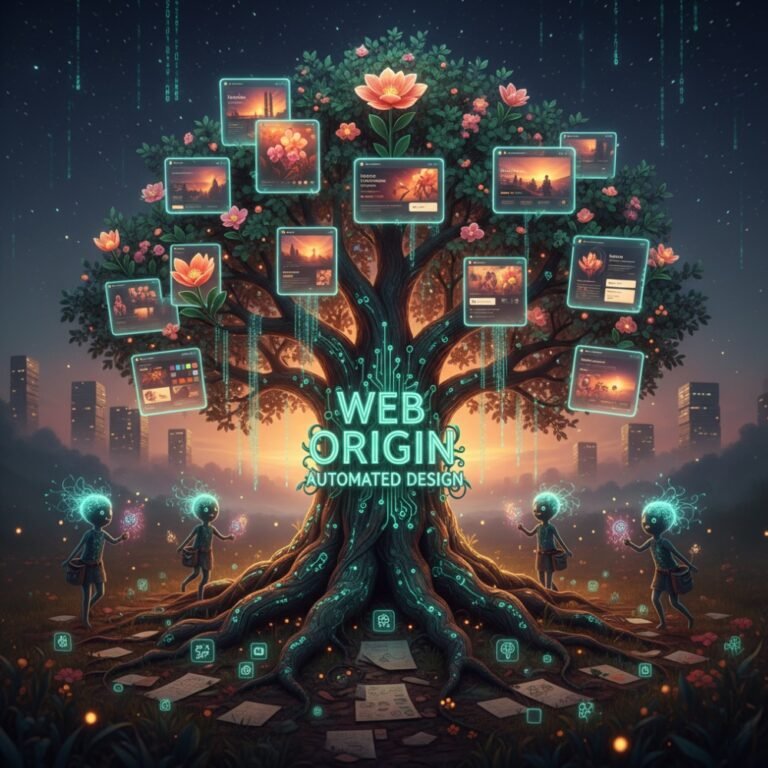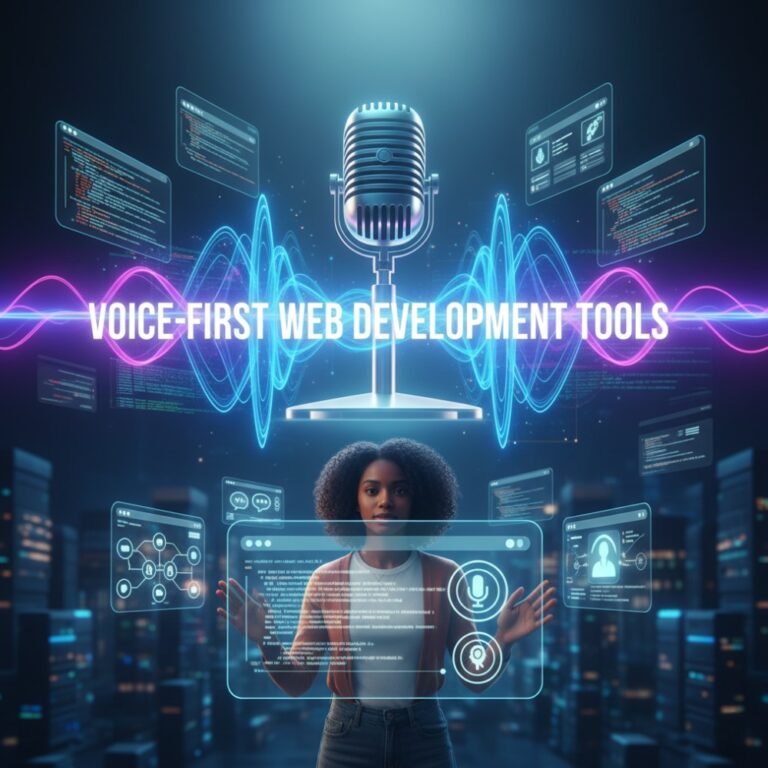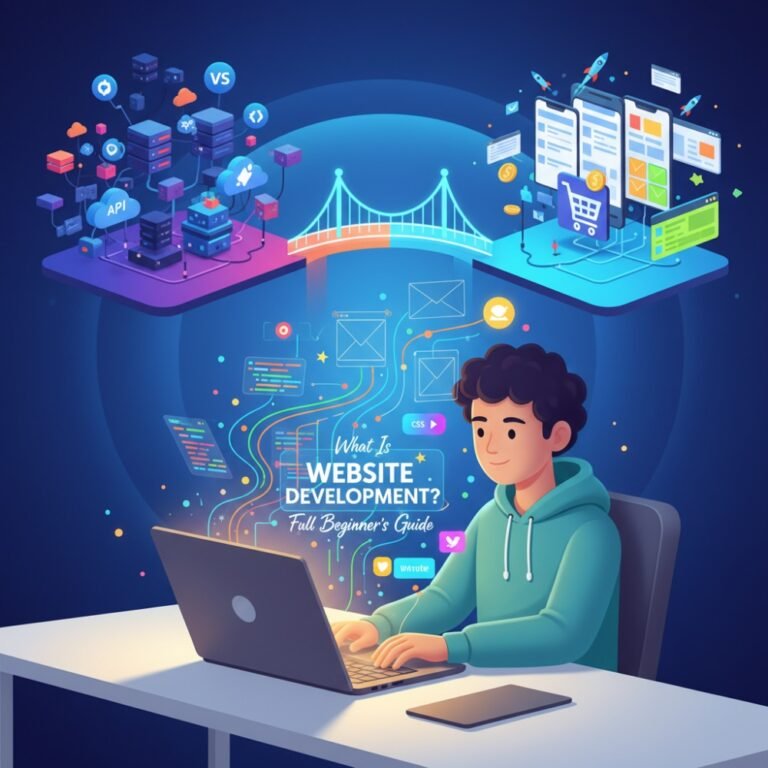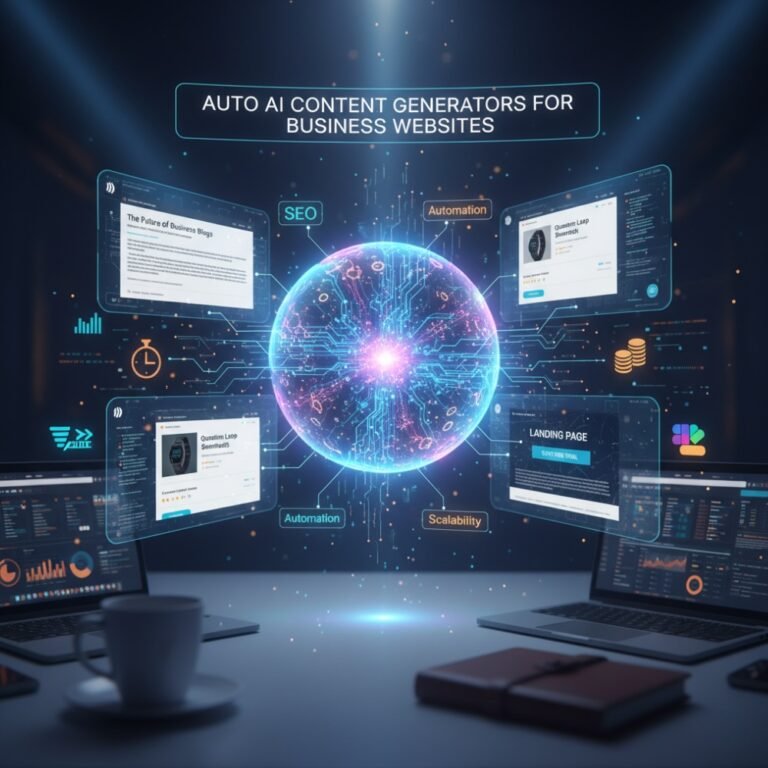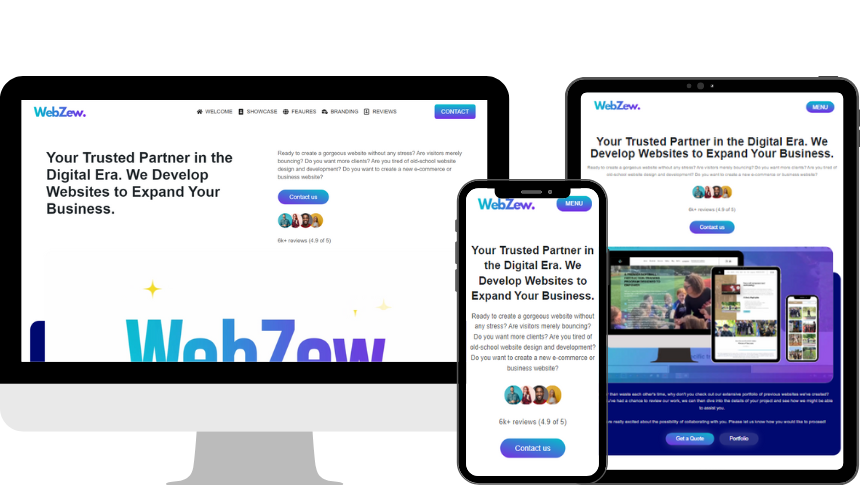Imagine a world where building a stunning, fully functional website doesn’t require late nights poring over code or hiring a team of developers. Instead, you simply describe your vision, and an intelligent system takes care of everything—from design to deployment—in minutes. This isn’t science fiction; it’s the dawn of autonomous AI web developers. These cutting-edge tools are set to transform how we create and maintain online presences, making web development accessible, efficient, and innovative.
In this article, we’ll dive deep into what autonomous AI web developers are, how they’ve evolved, their core capabilities, and the technologies behind them. We’ll also explore the benefits, challenges, and future predictions, all while comparing them to today’s tools. Whether you’re a business owner, a developer, or just curious about AI’s role in tech, stick around to see how this technology could change everything.
What Are Autonomous AI Web Developers?
Autonomous AI web developers are advanced AI systems capable of independently handling the entire web development process without constant human intervention. Think of them as virtual engineers that understand natural language instructions, generate code, design interfaces, and even optimise for performance—all on their own.
Unlike basic chatbots or code snippets generators, these agents operate with a high degree of autonomy. They can interpret user requirements, make decisions based on best practices, and iterate on their work. For instance, if you say, “Build me an e-commerce site for handmade jewellery with secure payments and mobile responsiveness,” the AI would plan the architecture, code the frontend and backend, integrate payment gateways like Stripe, and deploy it to a host like Vercel.
This level of independence stems from combining multiple AI disciplines, allowing the system to act like a seasoned developer team. It’s not just about writing code; it’s about creating complete, production-ready solutions.
Difference Between Traditional AI Tools and Autonomous Agents
Traditional AI tools, such as simple code completion plugins, require human guidance at every step. They might suggest a function or fix a syntax error, but the developer still drives the process. Autonomous agents, however, take full control. They plan, execute, and refine tasks independently, learning from feedback loops.
For example, a traditional tool like an IDE autocomplete might help you type faster, but an autonomous agent could refactor your entire codebase for efficiency without being asked. This shift from assistance to agency marks a fundamental difference, reducing human involvement to oversight rather than micromanagement.
Evolution from Manual Coding to Autonomous AI Developers
Web development has come a long way. Let’s trace its journey:
- Manual Coding: In the early days, developers wrote every line of HTML, CSS, and JavaScript by hand. It was time-consuming and error-prone, requiring deep expertise.
- No-Code Platforms: Tools like Wix or Squarespace emerged, allowing users to drag-and-drop elements without coding. Great for beginners, but limited in customisation.
- Low-Code Solutions: Platforms such as Bubble or Adalo let users build apps with minimal code, using visual interfaces for logic and data flows. They bridged the gap but still needed human logic setup.
- AI-Assisted Coding: Enter tools like GitHub Copilot, which suggest code based on context. Developers could accelerate their work, but humans remained in charge.
- Autonomous AI Developers: The latest evolution, where AI handles end-to-end development. Systems like Devin (from Cognition Labs) can build and deploy apps autonomously, marking a leap towards true independence.
This progression democratises web creation, moving from elite skills to AI-driven accessibility.
Key Milestones in AI for Web Development
AI’s integration into web dev has accelerated rapidly. Here are some pivotal moments:
- GitHub Copilot (2021): Powered by OpenAI’s Codex, it introduced real-time code suggestions, boosting productivity by up to 55% in studies.
- ChatGPT Code Interpreter (2023): Allowed users to generate, debug, and run code in natural language, handling complex tasks like data visualisation.
- Devin (2024): An AI software engineer that plans, codes, tests, and deploys full projects. It demonstrated building a website from a single prompt in under an hour.
- Other Notables: Tools like Replit’s Ghostwriter and Cursor evolved into more autonomous versions, incorporating multi-agent systems for collaborative AI workflows.
These milestones show AI shifting from helper to creator, with 2025 seeing widespread adoption in enterprise settings.
Influence of Automation on Software Jobs
Automation via autonomous AI web developers is reshaping jobs, not eliminating them. Routine tasks like boilerplate coding or basic debugging will be handled by AI, freeing humans for creative problem-solving and strategy.
However, concerns about job displacement persist. A 2024 McKinsey report suggested up to 45% of software engineering tasks could be automated by 2030. Yet, this creates new roles, like AI prompt engineers or ethical oversight specialists. Developers who adapt by upskilling in AI collaboration will thrive, turning potential threats into opportunities.
Core Capabilities of Autonomous AI Web Developers
What makes these AI systems so powerful? Let’s break down their key features.
Full-Stack Development
Autonomous AI handles frontend (HTML, CSS, React), backend (Node.js, Python Flask), and databases (MongoDB, SQL) seamlessly. It generates cohesive codebases, ensuring compatibility across layers.
For example, it might build a blog with React for the UI, Express for the server, and PostgreSQL for data storage—all optimised for speed.
Automatic Debugging and Testing
Gone are the days of manual bug hunts. These AIs run unit tests, integration tests, and even simulate user interactions to catch issues early.
Using tools like Jest or Selenium internally, they iterate until the code is robust, reducing post-launch fixes.
UI/UX Design Generation
Leveraging generative AI, they create intuitive interfaces. From wireframes to polished designs, they incorporate accessibility standards like WCAG.
Imagine describing “a minimalist portfolio site,” and the AI outputs Figma-like prototypes with responsive layouts.
Real-Time Deployment and Hosting
Once built, the AI deploys to platforms like AWS or Netlify, handling CI/CD pipelines automatically.
It monitors performance and scales resources as traffic grows, ensuring uptime.
Integration with APIs and Third-Party Services
Need to add Google Maps or Twilio SMS? The AI integrates them flawlessly, managing authentication and data flows.
This extends to e-commerce APIs like Shopify or payment processors, making complex features plug-and-play.
Continuous Learning and Self-Improvement
Through reinforcement learning, these systems improve over time. They analyse past projects, user feedback, and industry trends to refine future outputs.
For instance, if a design underperforms in user engagement, the AI adapts its algorithms for better results next time.
Technologies Powering Autonomous AI Developers
Behind the magic are sophisticated tech stacks.
Large Language Models (LLMs)
Models like GPT-4 or Grok underpin natural language understanding, translating prompts into code.
Machine Learning and Deep Learning
These enable pattern recognition for tasks like predicting user needs or optimising algorithms.
Generative AI for Design
Tools akin to DALL-E generate visuals, while Stable Diffusion variants create custom graphics.
Natural Language Processing (NLP)
NLP parses user instructions, handling ambiguities like “make it user-friendly.”
Reinforcement Learning for Optimisation
RL agents test variations, rewarding efficient solutions to evolve better code.
Cloud Computing and Serverless Frameworks
Platforms like AWS Lambda allow scalable, on-demand execution without managing servers.
Together, these technologies create a synergistic ecosystem for autonomy.
Predicted Benefits of Autonomous AI Web Developers
The advantages are game-changing.
- Speed and Efficiency: What took weeks now happens in minutes, accelerating time-to-market.
- Cost Reduction: Startups save on hiring, with AI handling tasks at a fraction of human rates.
- Democratisation of Web Development: Non-tech users can build pro sites, levelling the playing field.
- 24/7 Availability: Instant updates and scalability mean sites evolve round-the-clock.
- Personalised Websites: Using real-time data, AI tailors experiences, like dynamic content based on user behaviour.
A small business owner could launch a custom online store overnight, boosting competitiveness.
Challenges and Limitations
No tech is perfect. Here are the hurdles.
Quality Control and Creativity Limitations
AI might produce functional code but lack innovative flair, sticking to trained patterns.
Security Vulnerabilities in Autonomous Code
Without oversight, it could introduce exploits; regular audits are essential.
Dependence on Training Data and Bias
Biased data leads to skewed outputs, like culturally insensitive designs.
Integration with Legacy Systems
Connecting to old tech can be tricky, requiring hybrid approaches.
Lack of Human-Like Design Intuition
AI struggles with nuanced aesthetics, where human empathy shines.
Addressing these requires ethical AI development and human-AI collaboration.
Future Predictions for Autonomous AI Web Developers
Looking ahead, the trajectory is exciting.
Timeline of Adoption
- 2025: Early adopters in startups; tools like Devin become mainstream.
- 2030: Widespread use in enterprises, with 50% of sites AI-built.
- 2040: Fully autonomous ecosystems, where sites self-evolve without prompts.
Rise of Hybrid Teams
Humans and AI will collaborate, with developers focusing on strategy and AI on execution.
Emergence of Autonomous AI Web Agencies
Virtual agencies run by AI swarms, offering services at scale.
How Clients Will Interact Directly with AI Developers
Conversational interfaces will let clients chat with AI, iterating in real-time.
The Possibility of Self-Building and Self-Maintaining Websites
Sites that monitor themselves, update features, and fix issues autonomously—truly living web entities.
Comparison with Today’s Tools
How do autonomous AI stack up?
AI Code Assistants vs. Autonomous Developers
Assistants like Copilot aid coding; autonomous ones build entire projects independently.
No-Code/Low-Code vs. Full AI Autonomy
No/low-code needs setup; AI autonomy requires only a description, offering deeper customisation.
Human Agencies vs. AI-Driven Web Solutions
Human agencies provide creativity but at higher costs; AI offers speed and affordability, ideal for routine work.
In summary, autonomous AI web developers herald a new era, blending efficiency with innovation. As we embrace this tech, the web becomes more dynamic and inclusive.
FAQs
What exactly is an autonomous AI web developer?
It’s an AI system that independently builds, designs, and deploys websites based on user prompts, handling full-stack tasks without ongoing human input.
How do autonomous AI developers differ from tools like GitHub Copilot?
Copilot suggests code snippets, while autonomous developers manage the entire project lifecycle autonomously.
Will autonomous AI replace human web developers?
Not entirely—they’ll automate routine tasks, allowing humans to focus on complex, creative aspects and oversight.
What are the main benefits for businesses?
Faster development, lower costs, scalability, and personalised sites that adapt to user data.
Are there security risks with AI-generated code?
Yes, potential vulnerabilities exist, so human reviews and best practices are crucial.
How can I get started with autonomous AI web development?
Explore tools like Devin or emerging platforms; start with simple prompts and iterate.


